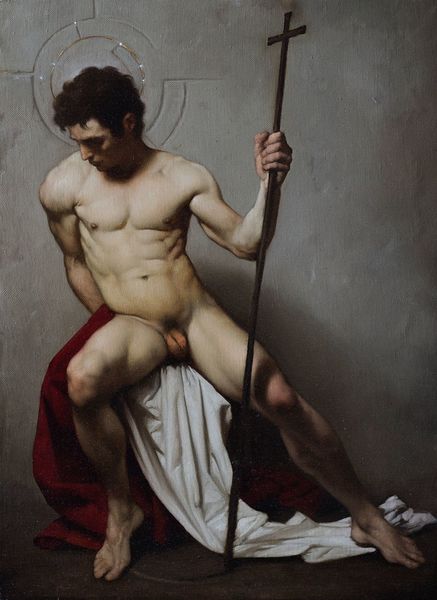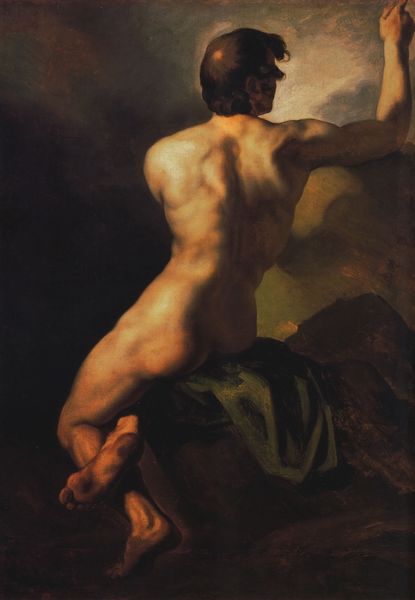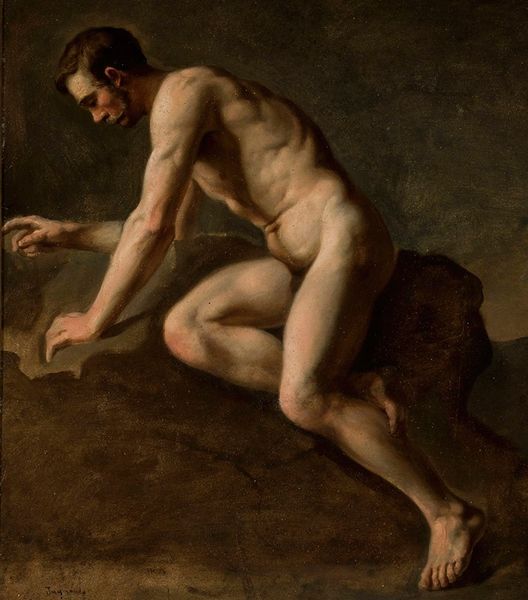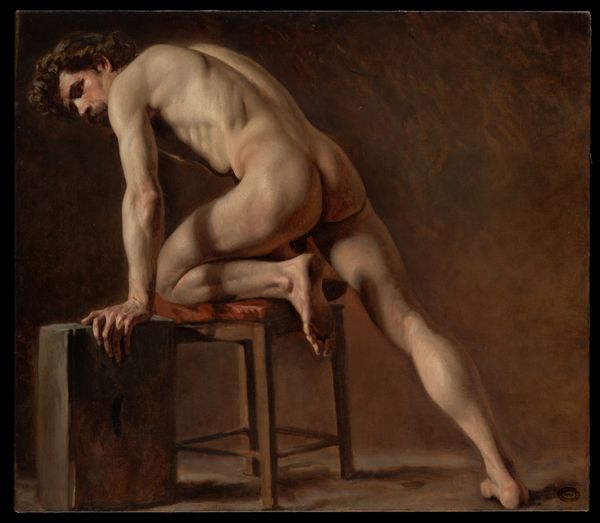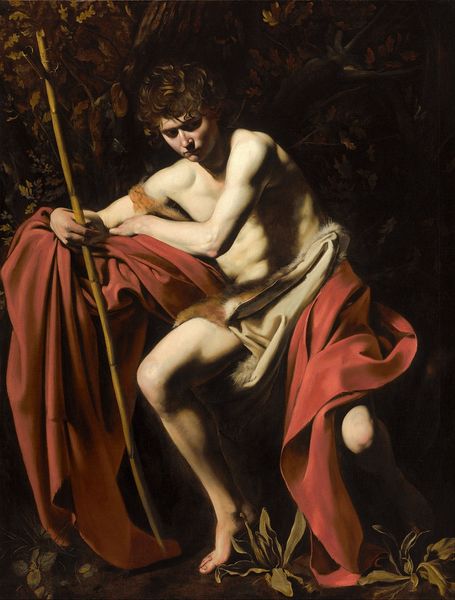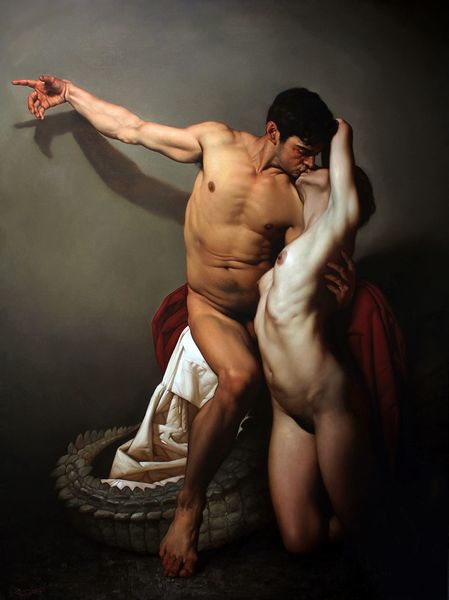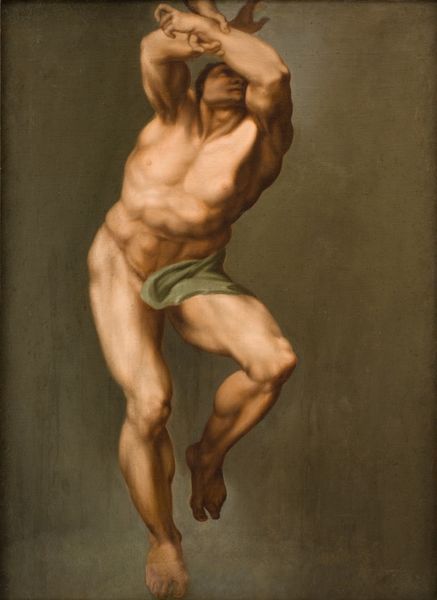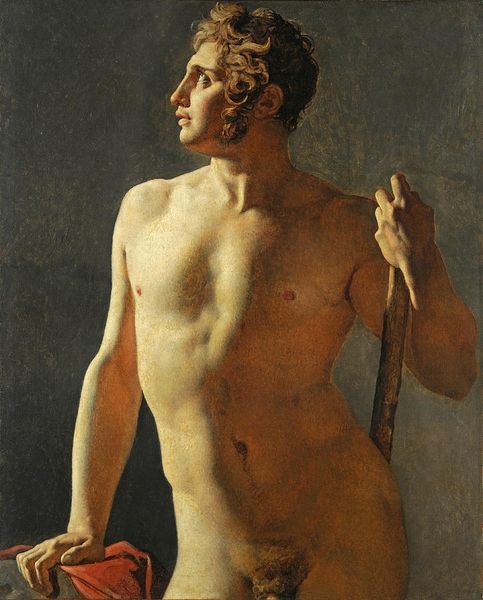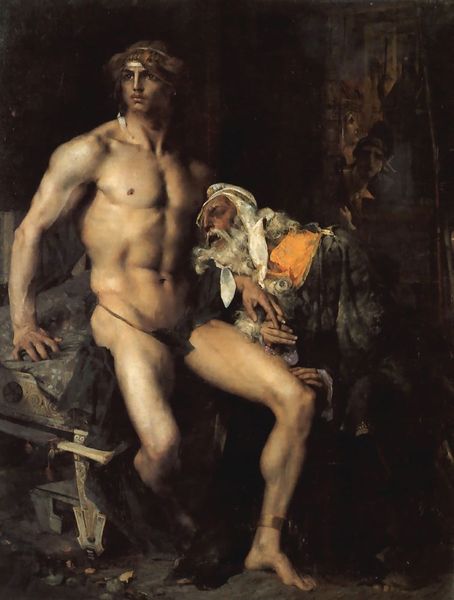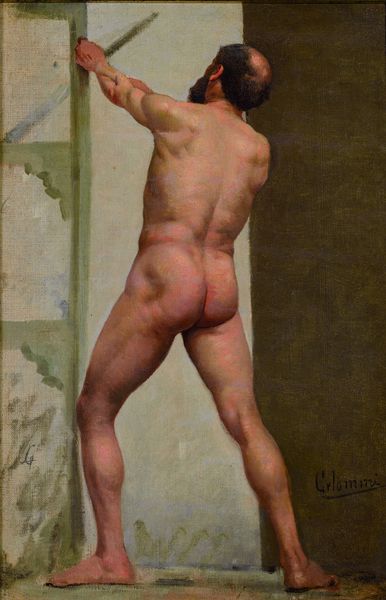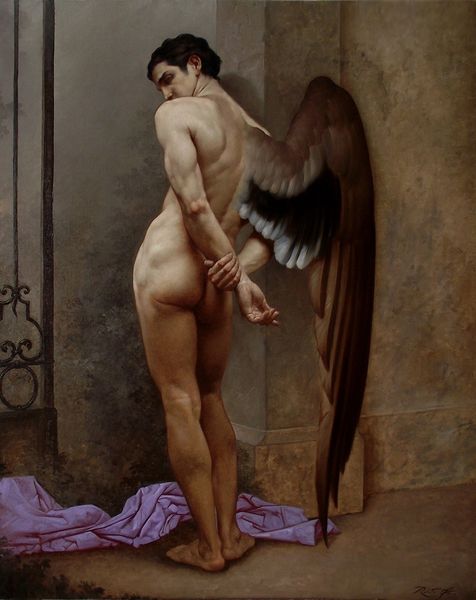
painting, oil-paint
#
neoclacissism
#
allegory
#
painting
#
oil-paint
#
classical-realism
#
figuration
#
history-painting
#
academic-art
#
nude
Dimensions: height 92.5 cm, width 73 cm, depth 9 cm
Copyright: Rijks Museum: Open Domain
Editor: This is "Warrior with Drawn Sword," painted by Joannes Echarius Carolus Alberti in 1808, using oil paint. The figure seems caught in a moment of tense anticipation; what particularly strikes me is the contrast between the smooth finish of the figure and the almost roughly rendered backdrop. What draws your eye in this piece? Curator: Well, I'm particularly interested in the materiality of it. Look at the stark contrast in the way the fabric is rendered compared to the skin. This difference signifies more than just technical skill. Consider the production of the oil paint itself; where did the pigments come from? How much did they cost? And who had access to that level of refinement? Editor: That’s a good point, I never really considered that before! Curator: Exactly! And let's think about the act of painting, the layers and process Alberti undertook in the making. Neoclassicism sought to ennoble through idealized form, but this ideal form relies heavily on accessible labor. It relies also on consumer culture, which allows people to experience art. What is neoclassical painting without the paint itself? How were such large canvases primed and stretched? Editor: It does give the 'heroic' subject a kind of, almost manufactured, quality. I mean, it's literally *made.* Curator: Precisely! This reveals a whole social and economic framework underpinning this image of strength and nobility. Is it truly noble, or merely an expensive display? How are the means of production obfuscated, if not hidden, from the final presentation? Editor: So, seeing it that way makes the "Warrior" less about some timeless ideal, and more about the time and labor that made the illusion possible? Curator: Precisely. We must also consider why artists in that historical moment focused on idealized forms, considering what the production of art at this time could enable one to do socially. Editor: That is interesting. It's kind of demystifying to think about the artist thinking about materials and access instead of just pure aesthetics. Curator: Exactly! By centering material analysis, we disrupt assumptions about artistic creation as purely intellectual or spiritual endeavors. The artwork now reveals its relationship to its own context of material and economic resources.
Comments
No comments
Be the first to comment and join the conversation on the ultimate creative platform.
